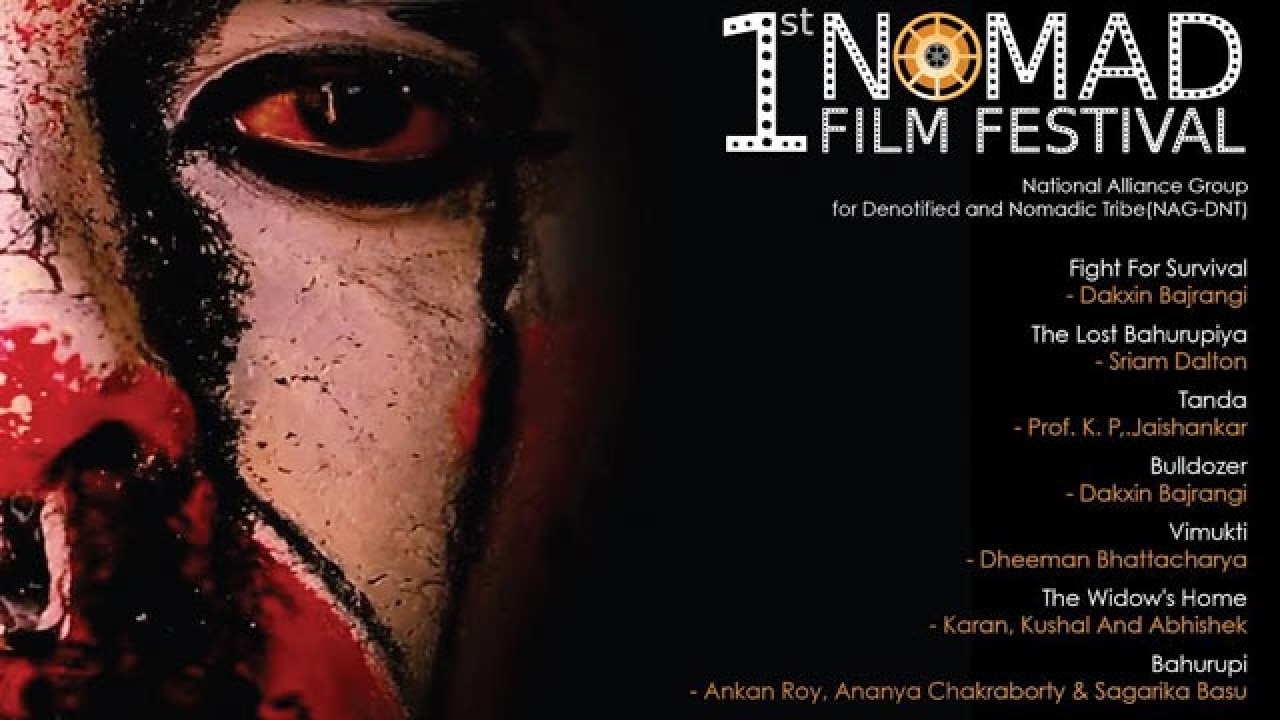
Filmmaker Dakxin Chhara has aptly named his film Bulldozer. The short film on the plight of the Chhara community (banjaras or nomads) living in Maninagar of Ahmedabad, one of the wealthiest cities in India, portrays the insensitivity of the state government. The administration, in the name of development, has been trying to evict the nomads who have been living there since the Sixties.
Set in 2004, the film jolts viewers as the issue and the area falls under Maninangar constituency represented by Narendra Modi when he was the chief minister of Gujarat between 2002 and 2012.
Bulldozer was one of the seven films screened during India’s first nomad film festival held in Delhi on September 4. Similarly, two other shorts, Fight for Survival and Bahurupia, highlight the livelihood struggles of snake-charmers, and the bahrupiya (performing artistes who can take on the forms of gods and animals). The festival was organised by the National Alliance Group for Denotified and Nomadic Tribes. The group plans to hold film festivals across the world to showcase how nomadic and denotified tribes (DNTs) have been pushed to the margins amidst development and harsh laws which have robbed them of their sources of survival.
While all such festivals are welcome as they help to sensitise society, administration and judiciary about the nomads, it is unlikely that they would serve the larger objective of the filmmakers — to help these communities scale up the socio-economic ladder and get rid of their “criminal tribes” tag.
The nomads are itinerants in search of livelihood. They live outside of human settlements as society tends to view them with suspicion. For centuries, the nomads have been associated with folk theatre, dance, singing, acrobatics, jugglery, fortune-telling, snake-charming and basket-weaving. Some rear wild animals and pigs. A few are into brewing hooch and other crimes as well.
The British listed such groups that posed a ‘threat’ to settled society and introduced a legislative measure, the Criminal Tribes Act (CTA), in 1871 which left 200 such communities ‘notified’ as criminals. The tag was removed in 1952 by the Indian government but their victimisation continues. “The police stations across India still maintain the records of “criminal tribes”, claims Dakxin Chhara who belongs to Chhara community known as the “thieves’ tribe” in Gujarat. Similarly, Pardhi in Maharashtra and Bedia in Bihar are deemed “criminals”.
Due to lack of proper settlement and education, most nomads have either switched to begging or remained in crime. Reservation benefits have largely escaped them. Ambiguity in their quota status is another issue. They are clubbed under OBCs by the Centre, as Schedule tribes or Schedule castes in some states, and slotted the DNT category in Maharashtra and a few other states.
They lack political leadership too even as their population is around 9 crore which means 7% of India’s total headcount.
“Sub-categorization of the OBC quota can help”, says Haribhau Rathod, the two-time Member of Parliament and currently a Congress legislator from Maharashtra. “The quota should be divided into three equal parts of 9% each — “Extremely backward”, “More backward” and “Backward classes”. As of now, most quota benefits are being grabbed by the Yadavs and Kurmis while the extremely backward are left behind,” says Rathod who is campaigning for their development for many years.
Rathod’s views find resonance with the suggestions of the National Commission for Backward Classes in 2015. However, the NDA government is dragging its feet for fear of political ramifications.
The author is Special Correspondent, dna